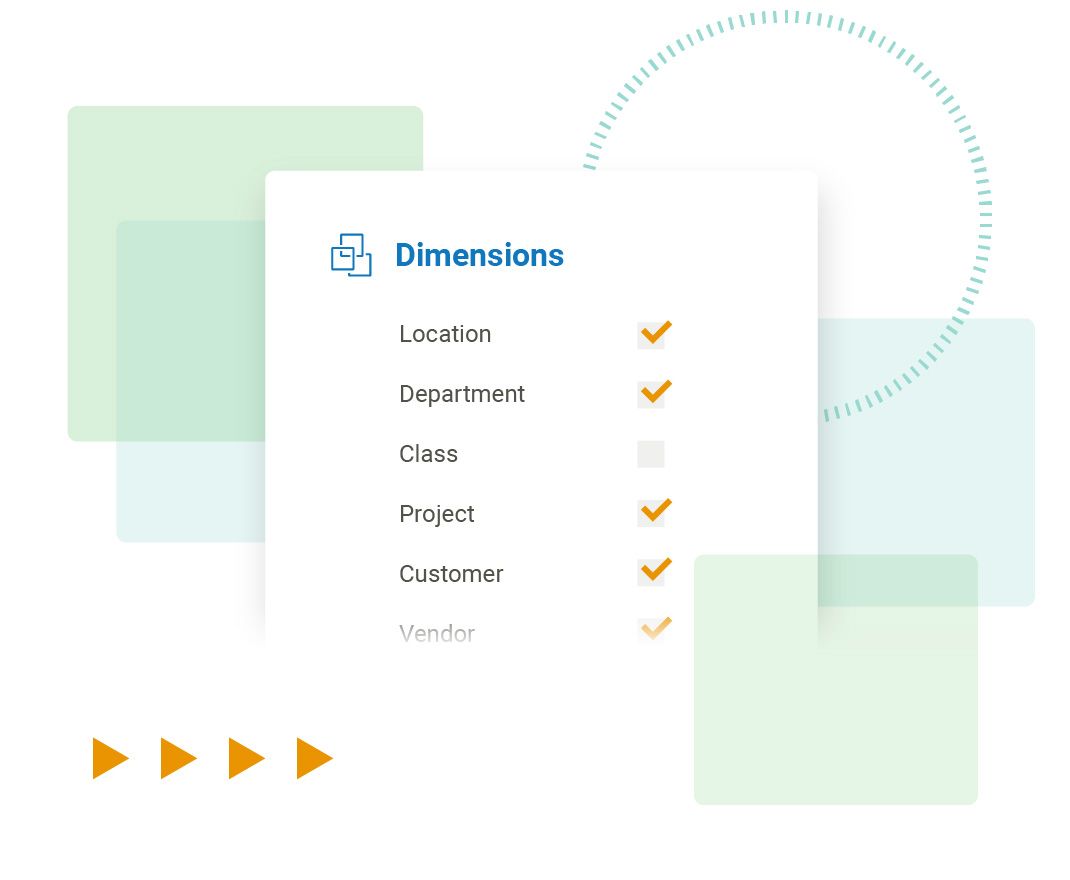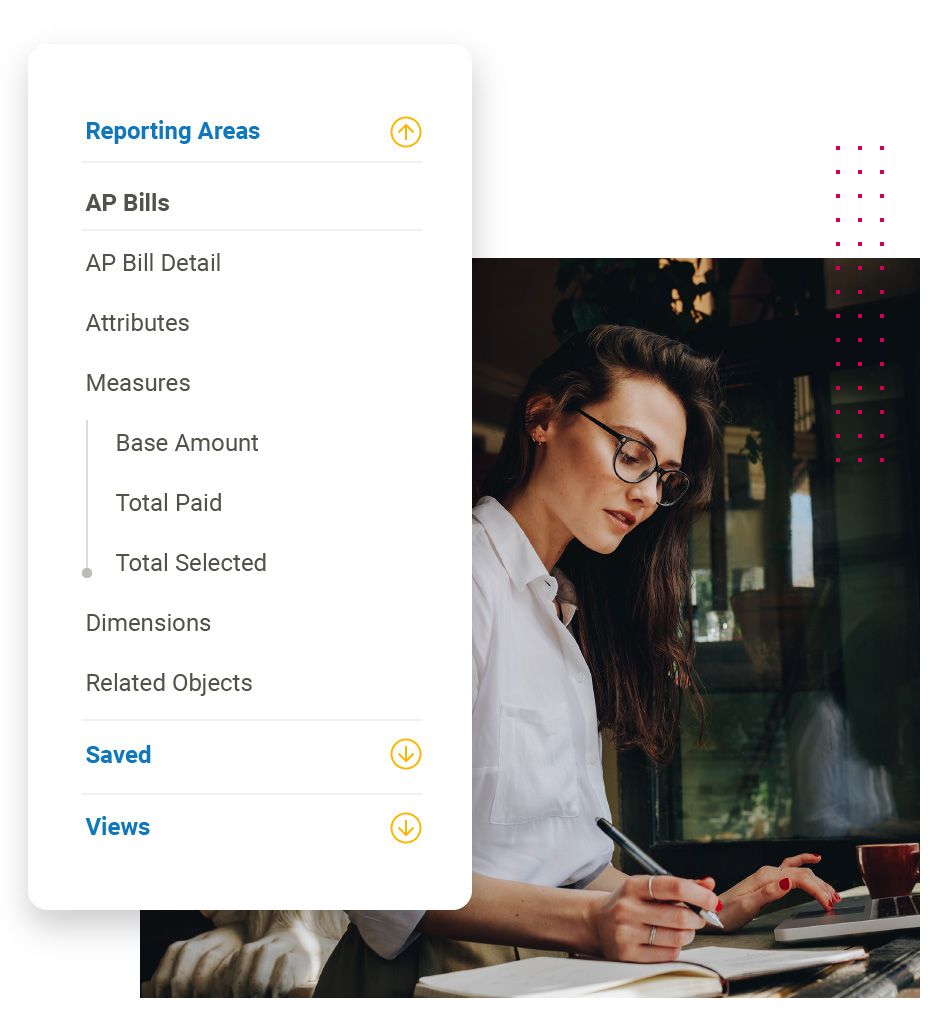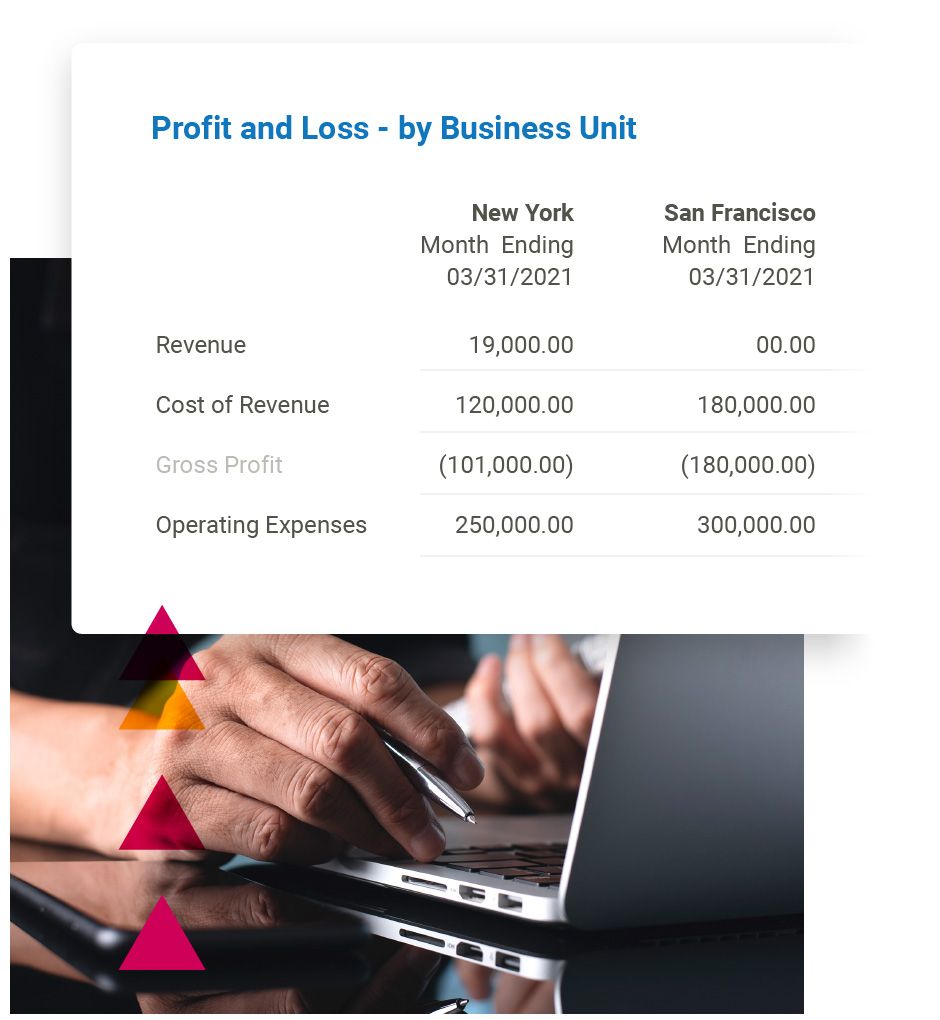
Sage Intacct Accounting Dimensions: What is It and How Can It Improve My Business?
When using the word dimensions, you might think about height, width, and depth. But in this article, we want to give you an overview of Dimensions, a tool inside the Sage Intacct accounting solution software. We’ll also share how to make highly informed decisions for the long-term success of your business with this powerful function.
To get specific, we’ll cover the following topics:
- A History of the General Ledger
- Define Sage Intacct (SI) Dimensions and how to recognize real ones
- Why SI Dimensions are so crucialto your business
- How dimensions are used by those in the restaurant, wealth management, SaaS, or Franchise industries with multiple products, services, and different departments
- Steps to get started using Sage Intacct dimensions in your company
Click here to sign up for the daily Sage Intacct demo.

General Ledger’s History
Chart of Accounts began as a list of categories used to track data. As companies grew and economic activity became mostly project-based, business leaders needed additional classes. A practicing accountant added sub-categories to the Chart of Accounts, and most accounting system vendors added the changes to their software.
Soon, with the extended account numbers and an excessive number of line items, the system proved to be error-prone. Not only that, but if you had a business with multiple services, products, or locations, making a comparison was complicated. As a result, companies resorted to outside tools for reporting.
Sage Intacct developers approached the issue with a more reliable solution. Pre-set dimensions in the software are useful, but Sage Intacct continued to innovate for what businesses need. The developers added location, department, project, customer, vendor, employee, item (product), and class to the list of dimensions, expanding it from the two main ones—time and category.
Now, users can choose from a simple list of dimensions. They no longer have to deal with the tens of thousands of entries that use their valuable time. The software now includes a capacity to create custom dimensions unique to individual businesses. And, your accounting team will manage these custom dimensions the same as pre-set ones. With this addition, companies can now achieve unprecedented visibility of their data.

Dimension Is a Classification Used to Organize, Sort, and Report
Now that we’ve explored the history of the chart of accounts, it’s difficulties, and Sage Intacct’s innovative approach to remedy errors with dimensions, let’s discover its benefits.
A quick definition of a dimension is a classification used to organize, sort, and report company information. Various Dimensions include time, category, department, location, customer, vendor, employee, item, class, project, and business-specific user-defined dimensions (UDD)s. The UDDs (custom dimensions) are available on reports and transaction entry pages. You can also populate a dimension value in a transaction based on the value of another dimension. View an example here showing the relationships for three UDD’s.

Real Dimensions Have Additional Characteristics
There are numerous accounting packages available which are adopting the custom dimension concept. Keep in mind that all dimensions are not real dimensions. A custom field is not a dimension. Additional journal entry attributes are not dimensions.
While these custom fields and additional journal entry attributes may permit users to run filtered reports on a collection of transactions, a dimension has other characteristics. Below are five of the most important:
- You can budget dimensions.
- Dimensions are available in general ledger transactions and operational transactions.
- Dimensions are not free-form text fields; they are a managed and controlled list.
- Dimension records can be grouped and, ideally, are hierarchical.
- Dimensions are more than just lists of things. You should be able to track the attributes of dimensions.
Learn more details about the five characteristics of dimensions here.
![]()
Why Are Sage Intacct Dimensions Important to Your Business?
After reviewing the above five characteristics of dimensions, it’s simple to see that you can gain a new business perspective.
Implementing Sage Intacct dimensions offers your team the capability to track and report your financial and operational data.
When you have a flexible foundation and quick access to insights, you expedite your decision-making time and drive growth.
To recap, with Sage Intacct dimensions you:
- Simplify your chart of accounts
- Track business like never before
- Streamline reporting and save time
Even in these unprecedented times, Sage Intacct continues to develop product enhancements that make it the number one cloud-based ERP on the market.
Real Dimensions innovate your general ledger; this means you find money, save time, and focus on building profits. To learn more about Sage Intacct developments in 2020, click here.
User-Defined Sage Intacct Dimensions
Explore how dimensions can be personalized for your context.
Download Sage Intacct Dimensions Datasheet 2 Page PDF and Value Story Slide Deck
Fill out the form below to access these two files.
Trusted CFO Solutions Is Your Source For Getting Started With Dimensions
We are a national partner with Sage Intacct and a trusted advisor to various businesses in the Franchise, Family Office, Restaurant Group, and Private Equity industries. We have a solid track record of customer success stories.
The team at Trusted CFO is here to help you simplify and streamline your accounting department.
Are you ready to gain visibility and control of an ever-multiplying chart of accounts?
Do you want to get at the metrics behind transactions with an easy, quick, and robust financial management tool and work with a trusted partner?
Say yes and experience victory in these unprecedented times.
Tags
Outgrowing Quickbooks?
Say goodbye to spreadsheet reporting and manual consolidations and start using a cloud-based financial management system.
Related Content
Wrap-Up: Reimagine Your Month-End Close with Sage Intacct
Best Practices to Perfect Your Month-End Close With Sage Intacct
Decoding the Challenges of the Month-End Close
Fast-Track Your Financials: Techniques to Slash Your Month-End Close
Take Control of the Month-End Close: A Checklist for Success
Managing Your Accounts Payable: A Guide for Small Business Owners
© Trusted CFO Solutions.






